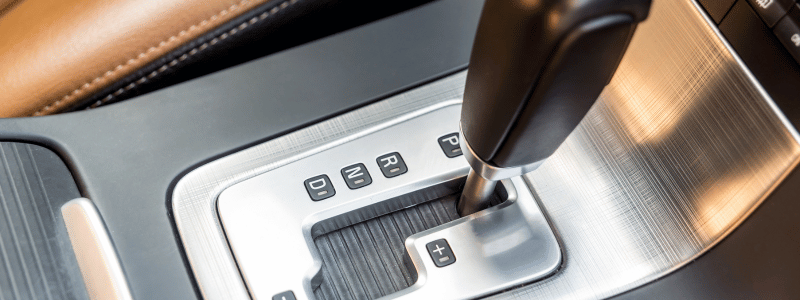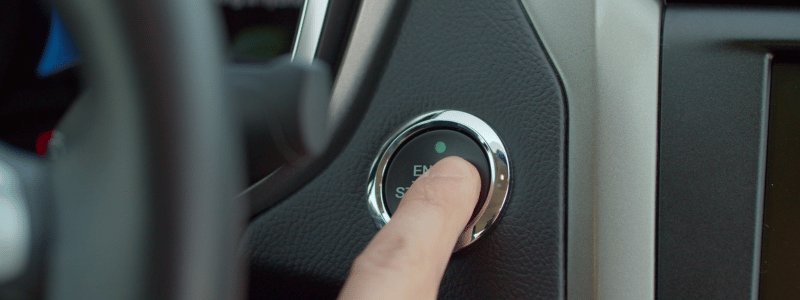How To Drive An Automatic Car
by Marsh Finance on Sep 18, 2024 10:09:59 AM
👉 Getting to grips with an automatic car
👉 Starting an automatic
👉 The different types of automatic
👉 Sounding off
👉 Driving an automatic car FAQs
Driving an automatic car is simple and straightforward, giving drivers the chance to enjoy their journeys without much effort. We’ve taken a look at how to drive an automatic, and compared it to manual cars to show you the differences between the two.

Getting To Grips With An Automatic Car
An automatic car is set up very much the same as a manual car. You have the steering wheel and similar pedals, controls to set internal temperatures and operate your window wipers. Where an automatic differs is in the pedals, the gear stick and the handbrake. From right to left, an automatic car has the following pedals:
- Accelerator
- Brake
That’s it. No clutch like in a manual, making it super simple to drive an automatic. Regarding the gear stick and handbrake, an automatic combines the two and provides a device where you can set your car to drive, neutral, park, or reverse, and activate the handbrake. This all-in-one tool usually comes as a dial where the handbrake would have been or as an indicator switch coming off the side of your steering wheel. This makes setting your car position easy, and without the need for gear changing, the only manual work you need to do is deciding whether you want your car to stop or go. Regarding gear changes, an automatic obviously does this for you. All of these features allow you to just focus on you and the road, and drive with ease.

Starting An Automatic
Starting an automatic car follows a similar principle to starting manual cars. In an automatic, you will need to press the brake pedal and then start your engine. Pressing the brake engages the ignition, allowing the start button to work. In most automatics there will be a keyless start/stop button that you can press to start your car, allowing you to get going quickly and easily. Once the engine is started, simply engage the car to drive using the makeshift gear stick/handbrake, apply some pressure to the accelerator, and you’re ready to go. Whenever you need to change the state of the car (park, neutral etc.), you will need to press the brake slightly.
The Different Types Of Automatic
You are likely to go with either a fully automatic or semi-automatic car. As the names suggest, a fully automatic car removes any chance for you to change gear yourself, and semi-automatic gives you the option to, should you want to. In semi-automatic cars, the option to change gears will usually come in minus and plus paddles either side of the steering wheel. As you can imagine, clicking the plus will move the gears up and the minus the opposite. A slight difference to a manual gearstick in that you only go up and down, a semi-automatic still takes away a huge amount of work, even if you were to use the paddles. You might be wondering if a semi-automatic is worth buying over an automatic. Let’s take a look at the arguments for and against owning a semi-automatic vs an automatic.
Arguments for semi-automatics
- Semi-automatics still give you the option of changing gears. This gives you greater flexibility in your driving control.
- Greater fuel efficiency compared to automatics.
- Better suited to city driving.
Arguments for fully automatics
- Easier driving experience without the opportunity to change gears.
- Semi-automatics can sometimes jolt when changing gear, whereas automatics don’t.
The reality is that automatics and semi-automatics are not that different at all. If you still want the opportunity to change gears, then a semi-automatic is the way to go. Nevertheless, both provide a more seamless driving experience than a manual, which is reflected in their prices usually being higher than their manual counterparts. If price is a sticking point, why not consider a manual car. Yes, there's more to do, but learning is like riding a bike. See how to drive a manual car here.
Sounding Off
Driving an automatic is super easy, and doesn’t bring the fuss of a manual car. If you have moved over from a manual, the early days of automatic driving might be difficult to get used to, but in time the driving experience will be simple and straightforward. Has this got you sold on an automatic as your next car? Apply for finance with no impact on your credit score and receive a decision the same day, helping you get on the road as easily as driving an automatic.

Driving An Automatic Car FAQs
Press the brake slightly to engage the ignition. Once this is done, press the start-stop button, set your car into gear and drive away.
When you are driving an automatic in a traffic jam, you are best off applying the handbrake whenever the car is stationary. You can hold by gently applying the accelerator, but this will only wear down the accelerator pedal. Alternatively, you can hold the car steady on the brakes, if your car has an automatic, temporary handbrake. Lots of automatic cars have these, and they work by applying a handbrake effect for a couple of seconds before rolling, to give you chance to get ready to set off. This feature is particularly handy if you’re in a traffic jam on a hill.
An automatic driving licence looks pretty much the same as a manual driving licence, except for the back. On the back of a driving licence, you will likely have date stamps in the ‘B’ row. This signals that you can drive cars. The way to spot if a licence is an automatic one is if a ‘78’ exists in the end column. This 78 represents code number 78 in licence category B, which states that the driver can only drive automatic vehicles.
Automatic driving lessons tend to be a similar price to manual driving lessons. Automatic driving lessons can range anywhere from £25 -£45. To get a more precise look at driving lesson costs, visit our driving test cost blog.
Driving a manual car with an automatic licence is treated as driving without a licence, which carries a punishment of three to six points on your licence and a possible monetary fine.
- Latest Car Updates & Advice (39)
- Car Reviews (24)
- Dealership Support (23)
- Industry Insights (20)
- Driving Test Advice (14)
- Car Insurance (8)
- Credit Score (8)
- Car Care & Maintenance (7)
- Car Tax (5)
- Christmas (3)
- Car Finance (2)
- Careers (2)
- Money Help (2)
- Company Updates (1)
- Partner Support (1)